

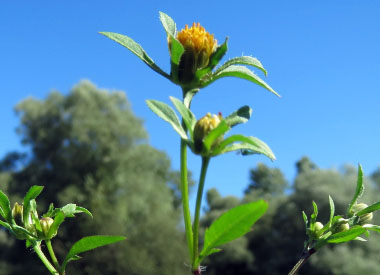

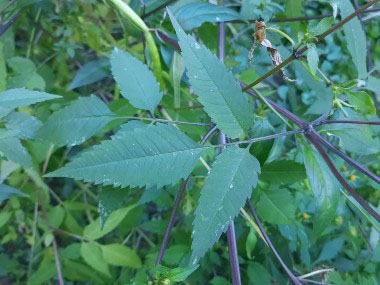
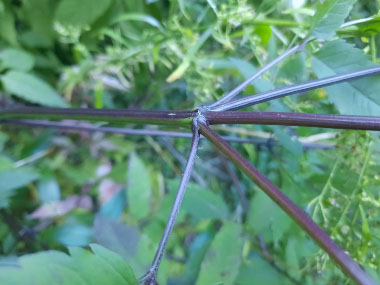
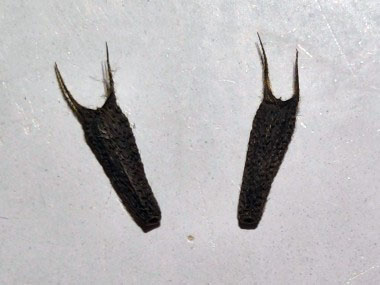
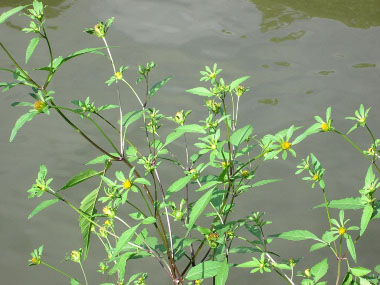
To support our efforts please browse our store (books with health benefits, etc.).
Beggarticks (or beggar ticks) are in the Asteraceae family, the largest family of flowering plants. Their phenomenal spread and colonization is due partly to their effective pollination mechanisms and their distinctive dispersal adaptations. Seed distribution occurs by humans, animals, wind, and water. On Cabi.org, they wrote that between 40 and 65 percent of seeds still germinated after 60 months of being under water. They also shared that a higher percentage of seeds germinated when stored in water compared to those dry stored. The genus encompasses approximately 280 species.
Distinguishing Features
Beggarticks (or beggar ticks) are in the Asteraceae family, the largest family of flowering plants. Their phenomenal spread and colonization is due partly to their effective pollination mechanisms and their distinctive dispersal adaptations. Seed distribution occurs by humans, animals, wind, and water. On Cabi.org, they wrote that between 40 and 65 percent of seeds still germinated after 60 months of being under water. They also shared that a higher percentage of seeds germinated when stored in water compared to those dry stored. The genus encompasses approximately 280 species.
Flowers
Being in the Aster family, the flower has many florets per head. Florets are tubular, and they are orange to orangy-yellow. Beggartick flowers are in bloom anywhere from July through October depending on location. Blooms will persist one to two months.
 Fields
of Nutrition has medicinal benefits and vitamin/mineral content of Beggarticks.
Fields
of Nutrition has medicinal benefits and vitamin/mineral content of Beggarticks.
Leaves
Leaves grow opposite, are pinnately divided into 3 to 7 segments, each segment up to 10 cm (4") long and 5 cm (2") wide. Leaflets are primarily lanceolate, they may be glabrous above and slightly pubescent beneath. Margins are serrate. Petioles vary in size and can be 4 cm (1.5") long.
Height
Beggarticks grow anywhere from 30 cm (1') to 1 m (3') tall. Depending on conditions they may grow taller.Stems are erect and multi-branched, mostly smooth and may have a purplish color.
Habitat
This plant can be found in moist woods, meadows, thickets, fields, roadsides, borders of streams, ponds, swamps, ditches and lakes. Bidens frondosa is native to North America. This species has been introduced around the world into many European countries, parts of Asia, Australia, New Zealand, and possibly some areas of northern Africa.
Edible Parts
Young leaves and stems can be used as a pot herb. Flowers can be candied or tossed in a salad. Eat in small quantities. Infusions of beggarticks are considered herbal remedies for irritation, inflammation, pain, among other things. Always seek the advice of a qualified health professional.
Other Name
Devil's Beggarticks.
Winter Survival Food Handbook

PDF Plant Magazines
Types of Wild Food
Geographic Zones Seasons
Disclaimer
EdibleWildFood.com is informational in nature. While we strive to be 100% accurate, it is solely up to the reader to ensure proper plant identification. Some wild plants are poisonous or can have serious adverse health effects.
We are not health professionals, medical doctors, nor are we nutritionists. It is up to the reader to verify nutritional information and health benefits with qualified professionals for all edible plants listed in this web site. Please click here for more information.
Why Edible Wild Food?
- Food costs are rising
- Free, wild food is readily abundant
- Wild food adds nutrition to your diet
- Wild food can help treat various medical conditions





